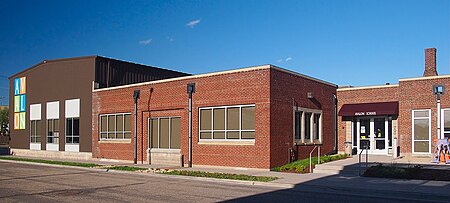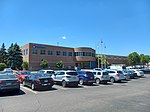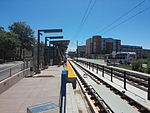Avalon School (Minnesota)

Avalon School is a project-based charter middle school and high school in Saint Paul, Minnesota, United States, located at 700 Glendale Street. As a project-based school, students meet their academic graduation requirements through a combination of independent projects, group projects, and seminars. Individual students' schedules vary depending on the seminars they are enrolled in and the activities they are involved with. Students spend a significant part each day working independently on projects. The school has a flat organizational structure with no principal or director in a position of power. The staff members work collaboratively to manage the school.The school moved to its new Glendale Street location in 2007, 6 years after it was founded in 2001. The new location has expanded throughout the years adding a new middle school wing and office section, replacing parts of the surrounding buildings previously owned by Take Action MN.
Excerpt from the Wikipedia article Avalon School (Minnesota) (License: CC BY-SA 3.0, Authors, Images).Avalon School (Minnesota)
Glendale Street, Saint Paul Saint Anthony Park
Geographical coordinates (GPS) Address Phone number Website Nearby Places Show on map
Geographical coordinates (GPS)
| Latitude | Longitude |
|---|---|
| N 44.9622 ° | E -93.1985 ° |
Address
Avalon School
Glendale Street 700
55114 Saint Paul, Saint Anthony Park
Minnesota, United States
Open on Google Maps






